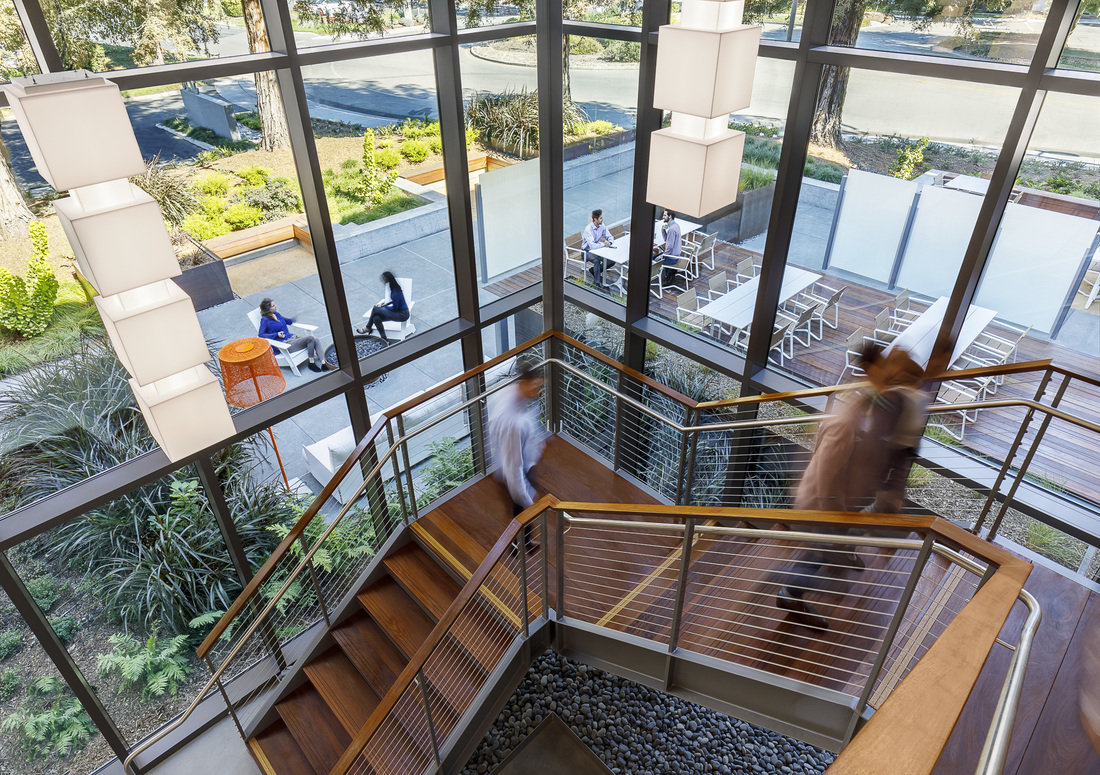
Workplace Amenities Revisited: Helping Organizations Evaluate Critical New Office Updates
By Robin Weckesser, CEO, a3 Workplace Strategies
Cutting-edge amenities have long been a workplace tool used by organizations to attract talent, promote corporate culture, and enhance the bottom line. Today, as employees slowly return to the “new-normal” office, more traditional amenities such as advanced technology, air quality, natural lighting, food provisions, fitness outlets, and outdoor space take on even greater significance. But these amenities now need to be upgraded in response to new health and safety protocols. At the same time, organizations should address the emerging need for new but critical amenities such as touchless surfaces, remote lighting controls, and adaptive furniture.
Planning the design of your re-imagined workplace involves many choices that should reflect your culture and brand. This includes the inclusion of staff who continue to work from home.
At the end of the day, even with many remote employees, the workplace should be about the people.
Babies and Boomers
Making the right choices involves many considerations, including sensitivity to changing demographics with Gen Z and Millennial digital natives working side-by-side or virtually with Baby Boomers. Each generation has different skillsets and mindsets. And it’s important to accommodate all workers in meeting evolving demands.
In this environment, organizations should consider alluring amenities to improve their competitive edge. This is vital for recruiting, enhancing employee engagement and productivity, and reinforcing brand and culture.
Topping the list of preferred amenities recently cited by employees are technology, food, fitness, outdoor space, and fast, connected elevators. Here is a checklist to help you create office and home environments with the right balance of new and long-time amenities.
Welcome-to-the-Future Amenities
The lingering effects of the pandemic will prompt many new products, digital applications, and structural changes, some obvious, some novel, all important ways to address new standards.
For example:
- Hand-sanitizing stations.
- Smart tech. Worker and visitor identification. Technology integrated in apps and furniture. Touchless technology for surfaces, bathroom fixtures, elevator buttons.
- UV lighting that kills germs.
- Vinyl film (“office frosting”) to create discreet workspaces.
- Improved air filtration and purification.
- Upgraded sanitation and HVAC systems.
- Screened walls to separate workstations.
- Specially designed sit-stand furniture and furniture with wipeable fabric.
- Artificial Intelligence with PC’s, smartphone apps, and voice-operated commands to control windows and light tinting.
- Outdoor workspaces that include all-weather furniture.
- Seating reconfiguration for face-to-back or back-to-back.
- Adaptable furniture that invites collaboration.
- Sound-proofed work pads.
- Movable walls.
- Flexible floorplates.
- Residential-style rooms with furniture and lighting that mirrors the home office.
For home office:
- Interactive technology set-up to optimize communication.
- Software monitoring of activities.
- Ergonomic chairs and computer pads.
- Height-adjusted desks.
- Indoor plants.
- Background music.
- Emotional support pets.
Evergreen Amenities
Before the pandemic and still desired today are the following:
- Connectivity
Ubiquitous connectivity and multiple devices enhance the way we interact, while working with outdated equipment can be detrimental to productivity. Mainstream technology alone doesn’t cut it. Data sharing and management are essential when employees work from home and when collaborating in different areas of the workplace.
To create a work-from-anywhere culture, consider the infrastructure throughout the workplace. Flexibility on where to offer technology and a variety of settings within the workplace helps meet everyone’s needs: Millennials and Gen Z may be more comfortable in open meeting areas for collaborating and in social areas for quick meet-ups. Baby Boomers are generally more comfortable in traditional offices or cubicles.
- Workplace Service Programs: Be sensitive to your employees’ lives outside of work. What do they enjoy doing in their spare time? How do they spend their lunch breaks? Do they have young families? A live-work-play dynamic that accents services and convenience is becoming paramount in many organizations.
Simple tasks–such as banking, dry cleaning, pharmacy pickups, and car washes–should be convenient. Onsite fitness centers, restaurants, and bars are becoming more common. In addition, walk-able outdoor areas, nearby entertainment, and personal care services can lead to happier and more productive employees.
- Be WELL: Employees also value ample wellness amenities that take into account the way people work, eat, and relax. Beyond the job and the pay, job hunters look at wellness features–such as natural light, good air quality, and fitness–when determining the right fit.
The push to put people’s wellbeing at the center of office design has led to an evolving WELL Standard. Today, more office buildings are becoming WELL-certified as sanctioned by the International WELL Building Institute (IWBI), which estimates that WELL-certified offices achieve a 22% increase in organizational performance.
Solicit, Communicate, and Accommodate: Before you blast an email to announce changes to your amenities, develop an engagement strategy that solicits input and workplace solutions. What is the long-term vision of company leaders? What do staff members need to enhance their productivity? This information helps facilitate long-term change.
When deciding on specific amenities, you of course need to determine costs, keeping in mind the expected ROI. In this regard, more companies are turning to experienced project management consultants to help guide the process and optimize ROI. How much will it cost? Well, consider the alternative (the demise of your enterprise) and remember that you can’t over-invest in people.
In any event, especially in today’s new normal, workplace adjustments are imperative, but it’s still all about the people and the experience. Studies show that performance is enhanced when the quality of life at home and at work is balanced. So, show employees that they are the heart of the organization in the office of the future, whether at the workplace or at home.
Robin Weckesser is the CEO and founder of a3 Workplace Strategies, a leading workplace consulting group based in San Jose and serving companies throughout the United States and worldwide. The firm provides a full range of project management and facilities management services, including strategic planning, change management, site selection, design, construction, and relocation oversight, space programming, and open office/collaborative environments. For more information email Robin at rweckesser@a3workplace.com.




Sorry, the comment form is closed at this time.